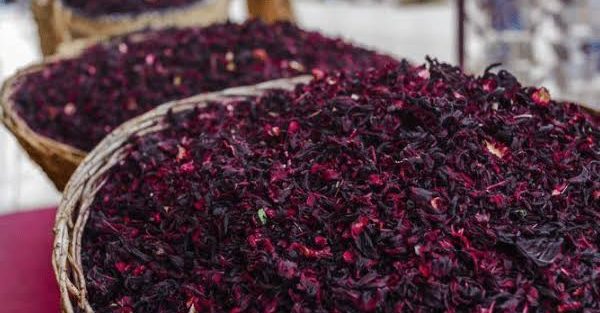Hibiscus flowers, known for their vibrant color, unique flavor, and wide range of health benefits, have become an increasingly sought-after commodity in global markets. Whether it’s for use in herbal teas, natural food coloring, cosmetics, or dietary supplements, the demand for hibiscus has surged in recent years, driven by growing consumer interest in natural, organic, and plant-based products.
In this blog, we will explore the exportation of hibiscus flowers, focusing on the key markets, opportunities for producers, the challenges they face, and the future prospects of this blooming industry.
Hibiscus Flowers: An Overview
Hibiscus flowers, particularly Hibiscus sabdariffa, are primarily cultivated in tropical and subtropical regions. The flowers are harvested, dried, and processed to create a wide variety of products. They are most commonly used to make hibiscus tea, a refreshing beverage with a tart, cranberry-like flavor. In addition to its popularity as a drink, hibiscus is also valued for its rich color, nutritional properties, and medicinal benefits, making it an essential ingredient in various industries, including food, beverages, cosmetics, and herbal medicine.
The most commonly traded type of hibiscus in the international market is hibiscus calyces, the red sepals surrounding the flower’s petals. These calyces are rich in antioxidants, vitamins (particularly vitamin C), and organic acids, making them highly prized in health-conscious markets.
Key Hibiscus Flower Export Markets
Hibiscus flowers are produced primarily in tropical and subtropical countries, where the plant thrives in warm climates. Some of the leading hibiscus producers and exporters include:
1. Egypt: The Global Leader
Egypt is the largest producer and exporter of hibiscus flowers, particularly the deep red variety used for making hibiscus tea. Egyptian hibiscus is highly regarded for its rich flavor, vibrant color, and high-quality calyces. The country’s hibiscus flowers are exported to a wide range of markets, including the United States, Europe, and the Middle East.
Egypt’s strategic position, coupled with its well-established export infrastructure, makes it the go-to source for hibiscus flowers globally. The Egyptian hibiscus industry is supported by extensive farming areas along the Nile River, where the plant flourishes in the region’s fertile soil.
2. Sudan: An Emerging Exporter
Sudan has long been an important producer of hibiscus flowers, particularly for export to markets in the Middle East and Asia. Sudanese hibiscus is known for its high quality, rich flavor, and intense red color. Despite challenges such as political instability and infrastructure limitations, Sudan continues to be a key player in the hibiscus flower trade.
The Sudanese government and international aid organizations have been working to improve the agricultural and export infrastructure in the region, which bodes well for the future growth of hibiscus flower exports from the country.
3. Thailand: Growing in Popularity
Thailand has also emerged as a growing exporter of hibiscus flowers, particularly for use in herbal teas and as a natural food coloring agent. With its tropical climate and expanding agricultural sector, Thailand is well-positioned to meet the rising global demand for hibiscus.
In recent years, Thailand has seen increased interest in value-added products such as hibiscus extract, which is used in the beverage and cosmetics industries. The country’s hibiscus exports are gaining traction in Europe and the United States, as consumers seek out more natural and organic alternatives.
4. Mexico: A New Contender
Mexico is another key exporter of hibiscus flowers, particularly to the United States. Mexican hibiscus flowers are often used in traditional drinks like agua de jamaica, a popular hibiscus-infused beverage consumed throughout Latin America. As interest in herbal teas and functional beverages grows, Mexican hibiscus has become an important export product, particularly to U.S. markets with large Latin American communities.
The Rising Demand for Hibiscus Flowers
Several factors are driving the growing demand for hibiscus flowers on the global market. These include:
1. Health and Wellness Trends
Hibiscus flowers are renowned for their numerous health benefits, including:
- Antioxidants: Hibiscus is rich in antioxidants, which help neutralize free radicals and reduce oxidative stress in the body.
- High Vitamin C Content: Hibiscus is an excellent source of vitamin C, which boosts the immune system, supports skin health, and promotes overall wellness.
- Blood Pressure Regulation: Studies suggest that hibiscus tea can help lower blood pressure, making it a popular choice for people looking to manage hypertension naturally.
- Weight Management: Some research indicates that hibiscus may assist in weight loss by inhibiting the formation of fat cells and improving metabolic processes.
As consumers continue to seek out functional, plant-based ingredients, hibiscus has gained popularity as a key player in the herbal tea market and broader wellness sector.
2. Popularity of Herbal Teas and Natural Beverages
Herbal teas, including hibiscus tea, are becoming increasingly popular worldwide, particularly among health-conscious consumers. Hibiscus tea is known for its tart, refreshing taste and vibrant red color, making it a favorite among tea drinkers looking for an alternative to traditional black or green teas.
As the global beverage market shifts toward healthier, natural, and plant-based options, hibiscus tea has gained a strong foothold in markets such as the U.S., Europe, and Asia. The rise of functional beverages—drinks that provide health benefits beyond basic nutrition—has further boosted demand for hibiscus-based products.
3. Natural Colorant in Food and Cosmetics
In addition to its use in beverages, hibiscus is prized for its vibrant red color, which makes it an attractive natural food colorant. The demand for natural colorants, as opposed to synthetic dyes, has increased in recent years, driven by consumer preferences for clean-label products with fewer artificial additives.
Hibiscus extract is now commonly used to color a range of food and beverage products, including juices, jams, candies, and baked goods. In the cosmetics industry, hibiscus extract is valued for its anti-aging properties, and it is commonly found in skincare products aimed at improving skin elasticity and reducing wrinkles.
Opportunities for Hibiscus Flower Exporters
The global market for hibiscus flowers is ripe with opportunities. Key opportunities for exporters include:
1. Tapping into Organic and Fair-Trade Markets
As consumers become more conscious about the origins of their products, the demand for organic and fair-trade certified hibiscus flowers is growing. Exporters who can offer high-quality, organically grown hibiscus are likely to tap into premium markets, particularly in Europe and North America, where consumers are willing to pay a premium for sustainably sourced and ethically produced goods.
2. Expanding into Value-Added Products
While dried hibiscus flowers remain the most common form of export, there is growing demand for value-added hibiscus products, such as hibiscus tea blends, hibiscus extract, and hibiscus powder. By processing hibiscus flowers into these higher-value products, exporters can boost their revenue while catering to the growing interest in functional and convenience foods.
For example, hibiscus extract is increasingly used in the food and cosmetics industries as a natural coloring agent and a health-boosting ingredient. Exporters who can diversify their product offerings and develop innovative hibiscus-based products may find success in global markets.
3. Meeting Rising Demand in Emerging Markets
Countries in Asia, Africa, and the Middle East are emerging as new growth markets for hibiscus flowers. These regions are increasingly incorporating hibiscus into their traditional food and beverage offerings, creating new export opportunities for producers in hibiscus-growing regions.
Challenges in Hibiscus Flower Exportation
While there are significant opportunities in the hibiscus flower export market, there are also several challenges that producers and exporters must navigate:
1. Climate Dependence
Hibiscus flowers are highly dependent on favorable weather conditions. Extreme weather events such as droughts, floods, or temperature fluctuations can significantly affect the quantity and quality of the hibiscus harvest. Exporters must be prepared to manage these risks, especially in regions where climate change is altering growing seasons.
2. Quality Control and Consistency
Hibiscus flowers are sensitive to handling, and proper drying and storage techniques are crucial for maintaining their color, flavor, and nutritional properties. Inconsistent quality or poor storage practices can lead to significant losses in export value. Exporters need to implement strict quality control measures to ensure that their hibiscus flowers meet international standards.
3. Market Competition
As the demand for hibiscus grows, competition between producers from different countries is intensifying. Exporters must focus on differentiating their products through quality, sustainability, and value-added processing to remain competitive in the global market.
Conclusion: The Bright Future of Hibiscus Flower Exports
The global exportation of hibiscus flowers is poised for significant growth, driven by the rising demand for herbal teas, natural ingredients, and functional products. Countries like Egypt, Sudan, and Thailand are well-positioned to capitalize on this demand, provided they focus on sustainability, quality control, and value-added processing.
Exporters who can meet the growing consumer appetite for natural, organic, and wellness-focused products will find a wealth of opportunities in this vibrant and lucrative market. As hibiscus continues to bloom in global trade, its versatility, health benefits, and natural appeal will ensure its place as a key commodity in the years to come.


